Abstract
The antimicrobial activities of monensin and lasalocid against representative strains of ruminal bacteria were evaluated in medium containing three different concentrations of potassium (1.3, 7.9, or 23.3 mM). The growth of Eubacterium ruminantium was inhibited by low concentrations of ionophores (less than or equal to 0.16 mg/liter), while the strain of Streptococcus bovis tested was resistant to high concentrations of ionophores (40 mg/liter) at all potassium concentrations tested. The MICs of the ionophores for strains of Bacteroides succinogenes, Butyrivibrio fibrisolvens, Ruminococcus albus, and Ruminococcus flavefaciens and for one strain of Bacteroides ruminicola increased with increasing potassium concentrations in the medium. High concentrations of ionophores (40 mg/liter) decreased the maximum cell yields or increased the lag times or both in cultures of one strain of Bacteroides ruminicola and two strains of Selenomonas ruminantium but did not completely inhibit the growth of these organisms. Increased potassium concentrations in the medium (from 7.9 to 23.3 mM) decreased the lag times or increased the cell yields or both when these three strains were grown in ionophore-containing medium, while the activities of lasalocid and monensin against these organisms were enhanced in the medium containing low potassium concentrations (1.3 mM). The data from this study suggest that extracellular potassium concentrations may influence the antimicrobial activities of ionophores in the rumen.
Full text
PDF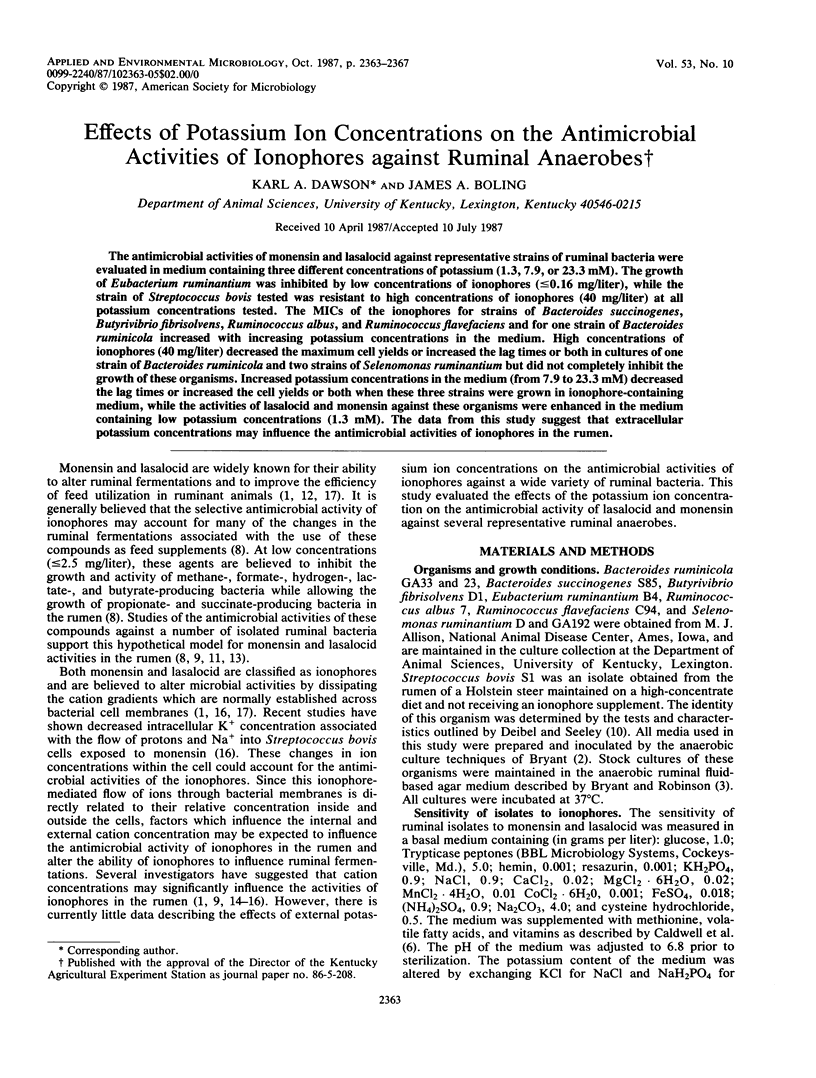
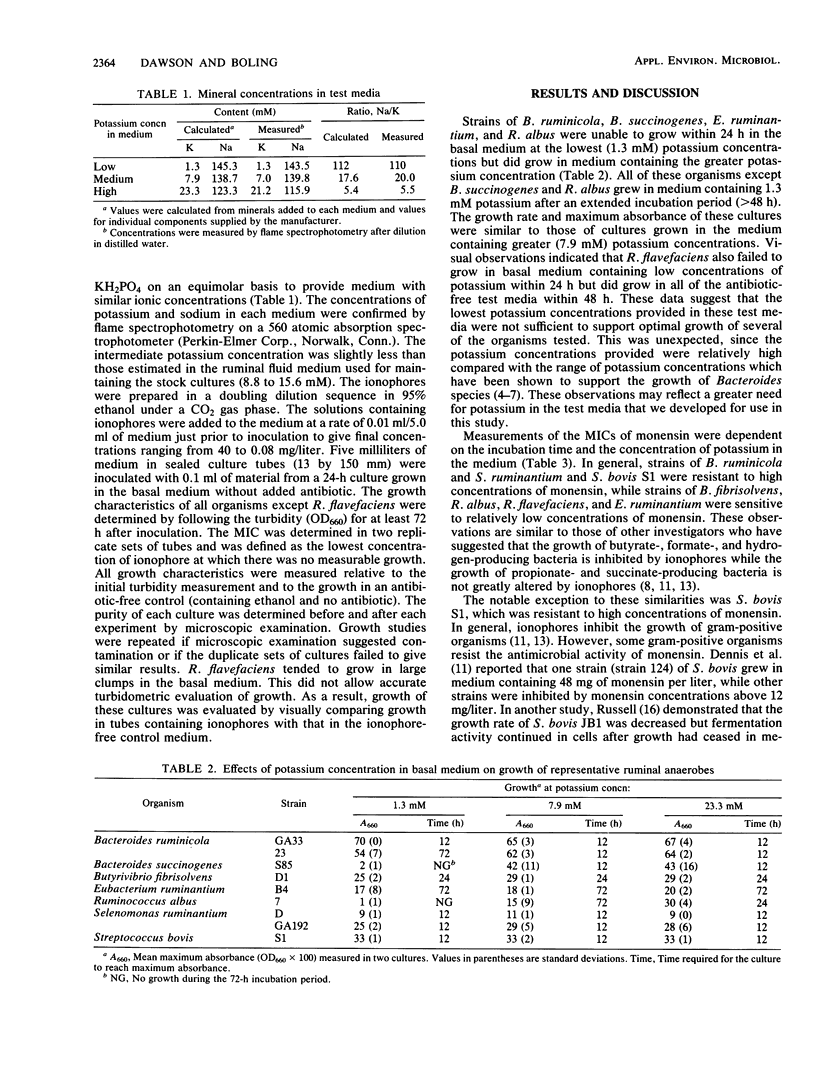
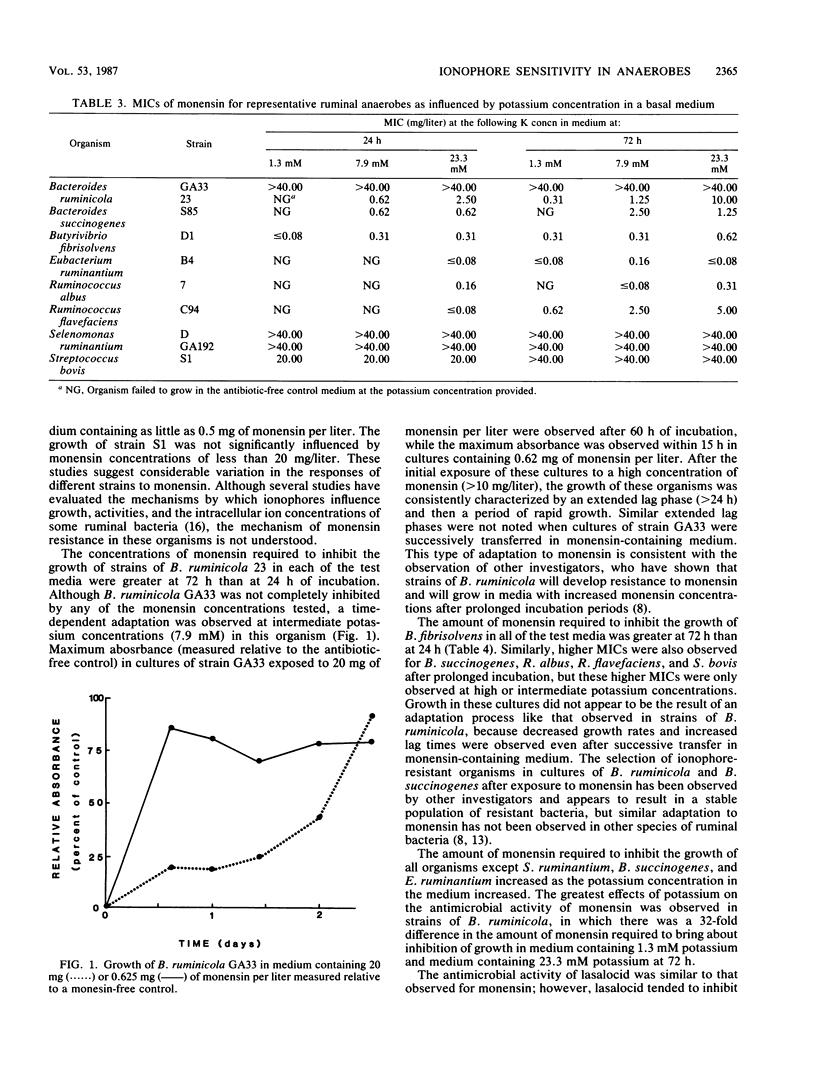
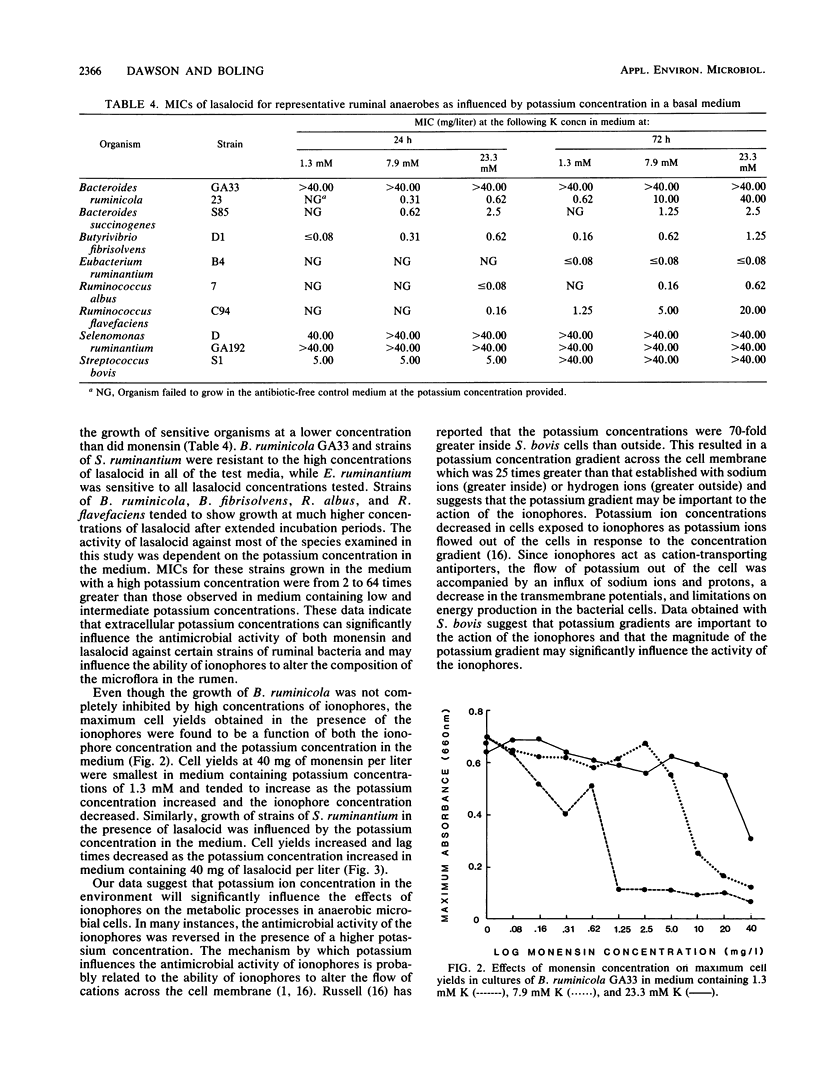
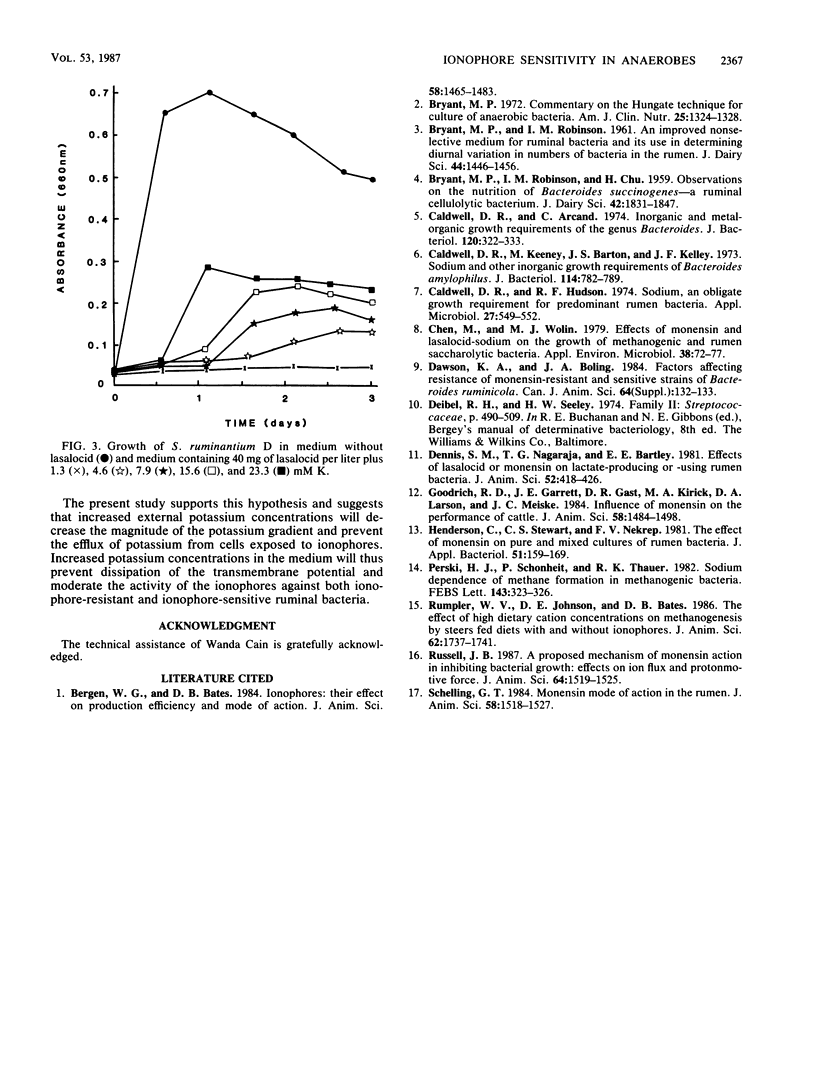
Selected References
These references are in PubMed. This may not be the complete list of references from this article.
- Bergen W. G., Bates D. B. Ionophores: their effect on production efficiency and mode of action. J Anim Sci. 1984 Jun;58(6):1465–1483. doi: 10.2527/jas1984.5861465x. [DOI] [PubMed] [Google Scholar]
- Bryant M. P. Commentary on the Hungate technique for culture of anaerobic bacteria. Am J Clin Nutr. 1972 Dec;25(12):1324–1328. doi: 10.1093/ajcn/25.12.1324. [DOI] [PubMed] [Google Scholar]
- Caldwell D. R., Arcand C. Inorganic and metal-organic growth requirements of the genus Bacteroides. J Bacteriol. 1974 Oct;120(1):322–333. doi: 10.1128/jb.120.1.322-333.1974. [DOI] [PMC free article] [PubMed] [Google Scholar]
- Caldwell D. R., Hudson R. F. Sodium, an obligate growth requirement for predominant rumen bacteria. Appl Microbiol. 1974 Mar;27(3):549–552. doi: 10.1128/am.27.3.549-552.1974. [DOI] [PMC free article] [PubMed] [Google Scholar]
- Caldwell D. R., Keeney M., Barton J. S., Kelley J. F. Sodium and other inorganic growth requirements of bacteroides amylophilus. J Bacteriol. 1973 May;114(2):782–789. doi: 10.1128/jb.114.2.782-789.1973. [DOI] [PMC free article] [PubMed] [Google Scholar]
- Chen M., Wolin M. J. Effect of monensin and lasalocid-sodium on the growth of methanogenic and rumen saccharolytic bacteria. Appl Environ Microbiol. 1979 Jul;38(1):72–77. doi: 10.1128/aem.38.1.72-77.1979. [DOI] [PMC free article] [PubMed] [Google Scholar]
- Dennis S. M., Nagaraja T. G., Bartley E. E. Effects of lasalocid or monensin on lactate-producing or -using rumen bacteria. J Anim Sci. 1981 Feb;52(2):418–426. doi: 10.2527/jas1981.522418x. [DOI] [PubMed] [Google Scholar]
- Goodrich R. D., Garrett J. E., Gast D. R., Kirick M. A., Larson D. A., Meiske J. C. Influence of monensin on the performance of cattle. J Anim Sci. 1984 Jun;58(6):1484–1498. doi: 10.2527/jas1984.5861484x. [DOI] [PubMed] [Google Scholar]
- Rumpler W. V., Johnson D. E., Bates D. B. The effect of high dietary cation concentration on methanogenesis by steers fed diets with and without ionophores. J Anim Sci. 1986 Jun;62(6):1737–1741. doi: 10.2527/jas1986.6261737x. [DOI] [PubMed] [Google Scholar]
- Russell J. B. A proposed mechanism of monensin action in inhibiting ruminal bacterial growth: effects on ion flux and protonmotive force. J Anim Sci. 1987 May;64(5):1519–1525. doi: 10.2527/jas1987.6451519x. [DOI] [PubMed] [Google Scholar]
- Schelling G. T. Monensin mode of action in the rumen. J Anim Sci. 1984 Jun;58(6):1518–1527. doi: 10.2527/jas1984.5861518x. [DOI] [PubMed] [Google Scholar]


